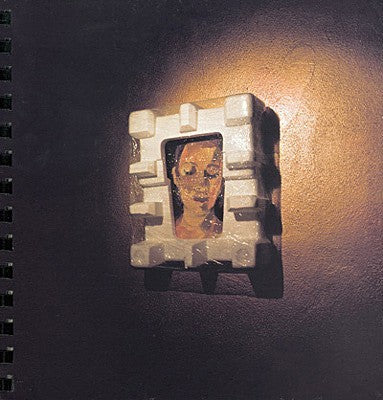Books
Magazines
Art
Editions
Multimedia
Allied Publishers
Authors
Style
Perla Medley
Posters & Postcards
Antiquarian
This book by top Czech painter Igor Korpaczewski, who goes by the pseudonym KW and teaches at Prague’s Academy of Fine Arts, contains pictures and drawings from 1990 to 1997. The figural paintings of Korpaczewski explore the relationships between the conscious and unconscious, the power and the powerless. Figures in a hypnotic trance, representatives of unknown androids and supermen are confronted by world consumption and pop culture. Korpaczewski presents these figures as sad new-age gods.
A Contract with the Unconscious
Intimate and foreign is the world of androgynous beings walking the line between sleep and death. It is as if one wakes up almost by accident and cannot remember what is real and what is just a dream from which one returns. One cannot tell one world from the other and decide who is the person to whom all those things happened. Viewing Igor Korpaczewski’s narrative paintings, one experiences just the same painful deja vu, similar to a state of hypnosis. One first enters his stories and only short time later realizes how well they are painted.
It is not easy to be intensely engaged with figurative painting as is the case of Korpaczewski. A figure in painting has represented visually spiritual poverty for many years. Exploring identity obviously leads to grotesqueness. To paint a figure seriously would mean a return to academics. The fact that such figurative painting is carried out successfully (Korpaczewski has been doing so for at least ten years) does not represent just another wave of classical (imagery) painting renaissance. If we were to talk about concept in Igor Korpaczewski’s case, we may conclude that the concept is to bring something „real“ into the painting. Still, Korpaczewski works with the feeling that such a thing is actually impossible.
Korpaczewski’s painting is determined by the selection of topics, their careful and quite meticulous thought which is hard to be mislead by chance. The themes make up a compact unity or rather a single story which may be intelligibly interpreted given a certain amount of sensibility. The important fact is that the story cannot be separated from the way Korpaczewski paints. This approach is quite rare in contemporary art while only a few people try to evaluate and articulate its meaning. On the contrary, it is typical to speculate about the medium which is a mere phase of a different expression or it has to drag along attributes for identification. Nobody, howerver, dares to put it away to the dump of art history alltogether. A good painting, if we are still able to recognize it, comprehends the same power as if it was painted for the first time.
Igor Korpaczewski’s paintings radiate precisely this feelling: their self-evidence is astonishing. Just one figure or one face on the canvas are enough as the rest is told with colors and brush strokes. Painting an advertising-like beautiful face and letting it work without conceptual subtext requires a contract with the unconscious. The painting may then look as if it was „real“. Where have we seen it before? In another world perhaps? In our hearts? It resembles so many lives which we didn’t have the chance to live. An artist has to find the courage to open them and believe that doing so is meaningful despite the fact that it may sound out-of-fashion today.
(It doesn’t matter whether the artist chooses a brush or a computer.)






